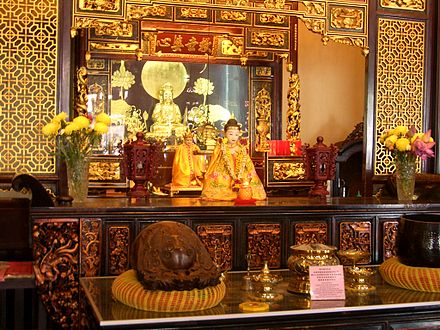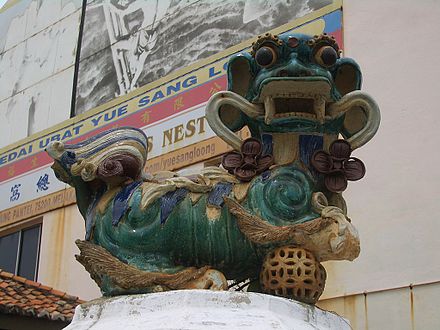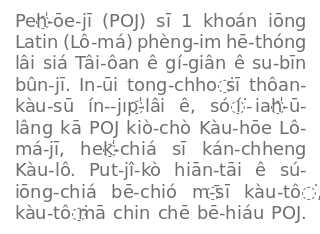Sōtō Zen or the Sōtō school is the largest of the three traditional sects of Zen in Japanese Buddhism. It is the Japanese line of the Chinese Cáodòng school, which was founded during the Tang dynasty by Dòngshān Liánjiè. It emphasizes Shikantaza, meditation with no objects, anchors, or content. The meditator strives to be aware of the stream of thoughts, allowing them to arise and pass away without interference.

Kenshō (見性) is a Japanese term from the Zen tradition. Ken means "seeing," shō means "nature, essence". It is usually translated as "seeing one's (true) nature," that is, the Buddha-nature.

Hōun Jiyu-Kennett, born Peggy Teresa Nancy Kennett, was a British roshi most famous for having been the first female to be sanctioned by the Sōtō School of Japan to teach in the West.
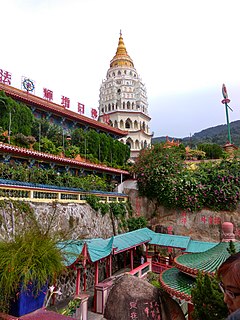
The Kek Lok Si Temple is a Buddhist temple situated in Air Itam, Penang, Malaysia is the largest Buddhist temple in Malaysia, and also an important pilgrimage centre for Buddhists from Hong Kong, the Philippines, Singapore and other countries in Southeast Asia. The entire complex of temples was built over a period from 1890–1930, an inspirational initiative of Beow Lean, the Abbot. The main draw in the complex is the striking seven-storey Pagoda of Rama VI with 10,000 alabaster and bronze statues of Buddha, and the 36.57 metres (120.0 ft) tall bronze statue of Kuan Yin, the Goddess of Mercy.
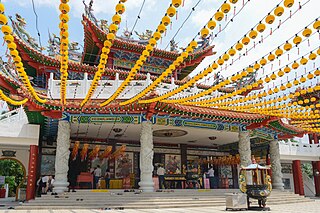
The Thean Hou Temple is a six-tiered temple of the Chinese sea goddess Mazu located in Kuala Lumpur, Malaysia. It is located on 1.67 acres (6,758 m2) of land atop Robson Heights on Lorong Bellamy, overlooking Jalan Syed Putra. It was completed in 1987 and officially opened in 1989. The temple was built by Hainanese living in Malaysia and the property belongs to and is run by the Selangor and Federal Territory Hainan Association. It is one of the largest temples in Southeast Asia.

Sōji-ji (總持寺) is one of two daihonzan of the Sōtō school of Zen Buddhism. The other is Eihei-ji temple in Fukui Prefecture. Fodor's calls it "one of the largest and busiest Buddhist institutions in Japan". The temple was founded in 740 as a Shingon Buddhist temple. Keizan, later known as Sōtō's great patriarch Taiso Jōsai Daishi, founded the present temple in 1321, when he renamed it Sōji-ji with the help and patronage of Emperor Go-Daigo. The temple has about twelve buildings in Tsurumi, part of the port city of Yokohama, one designed by the architect Itō Chūta.

James Ishmael Ford is an American Zen Buddhist priest and a retired Unitarian Universalist minister. He was born in Oakland, California on July 17, 1948. He earned a BA in psychology from Sonoma State University, as well as an MDiv and an MA in the Philosophy of Religion, both from the Pacific School of Religion.

Buddhist temples are, together with Shinto shrines, considered to be among the most numerous, famous, and important religious buildings in Japan. The Japanese word for a Buddhist temple is tera (寺), and the same kanji also has the pronunciation ji, so that temple names frequently end in -dera or -ji. Another ending, -in (院), is normally used to refer to minor temples. Such famous temples as Kiyomizu-dera, Enryaku-ji, and Kōtoku-in illustrate this naming pattern.

Shasta Abbey, located on sixteen forested acres near Mount Shasta in northern California, United States is a training monastery for Buddhist monks and a place of practice for lay Buddhists and interested visitors. It was established in 1970 by Reverend Master P.T.N.H. Jiyu-Kennett, who was Abbess and spiritual director until her death in 1996.

Zen is the Japanese variant of Chan Buddhism, a Mahayana school that strongly emphasizes dhyana, the meditative training of awareness and equanimity. This practice, according to Zen proponents, gives insight into one's true nature, or the emptiness of inherent existence, which opens the way to a liberated way of living.
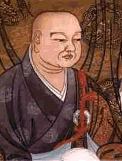
Keizan Jōkin, also known as Taiso Jōsai Daishi, is considered to be the second great founder of the Sōtō school of Zen in Japan. While Dōgen, as founder of Japanese Sōtō, is known as Highest Patriarch, Keizan is often referred to as Great Patriarch.

Tōfuku-ji (東福寺) is a Buddhist temple in Higashiyama-ku in Kyoto, Japan. Tōfuku-ji takes its name from two temples in Nara, Tōdai-ji and Kōfuku-ji. It is one of the so-called Kyoto Gozan or "five great Zen temples of Kyoto". Its honorary sangō prefix is Enichi-san (慧日山).
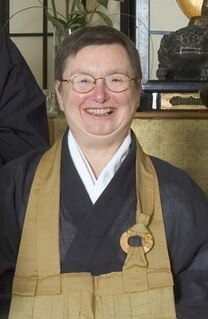
Gyokuko Carlson is a Soto Zen roshi and abbess of Dharma Rain Zen Center in Portland, Oregon, United States. She was formerly the co-abbot along with her husband, the late Kyogen Carlson. Carlson and her husband practiced at Shasta Abbey when Jiyu Kennett was the abbess, leaving to found their own center in 1986 when celibacy became a requirement at Shasta Abbey. She has been a practitioner of Zen Buddhism for more than thirty years, and is a member of the American Zen Teachers Association.

Shichidō garan is a Japanese Buddhist term indicating the seven halls composing the ideal Buddhist temple compound. This compound word is composed by the word shichidō (七堂), literally meaning "seven halls", and garan (伽藍), meaning "temple". The term is often shortened to just garan. Which seven halls the term refers to varies, and it is also pointed out that 七堂 is possibly a misinterpretation of shitsudō (悉堂), meaning a complete temple. In practice, shichidō garan often simply means a large temple with many buildings. See below for more details about what are the possible seven buildings included.

Zen is a school of Mahayana Buddhism that originated in China during the Tang dynasty as the Chan school (Chánzong) of Chinese Buddhism and later developed into various schools. Chán Buddhism was also influenced by Taoist philosophy, especially Neo-Daoist thought. From China, Chán spread south to Vietnam and became Vietnamese Thiền, northeast to Korea to become Seon Buddhism, and east to Japan, becoming Japanese Zen.

The Poh San Teng Temple or Sam Po Kong Temple is a Chinese temple located at the foot of Bukit Cina, next to the Malacca Warrior Monument and Hang Li Poh's Well in Malacca City, Malacca, Malaysia. The temple is dedicated to Tua Pek Kong.

Xiang Lin Si Temple is a Chinese temple located opposite of Cheng Hoon Teng Temple in Jalan Tokong, Malacca City. This double-storey temple follows the Buddhist branch of Mahāyāna Buddhism.


